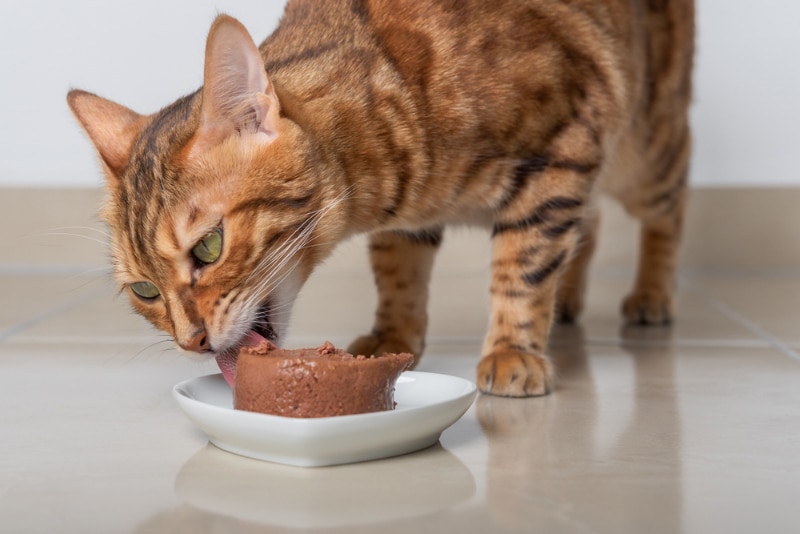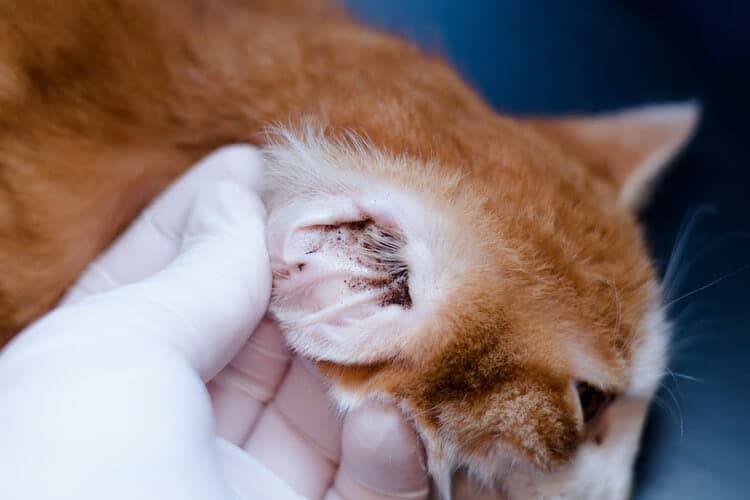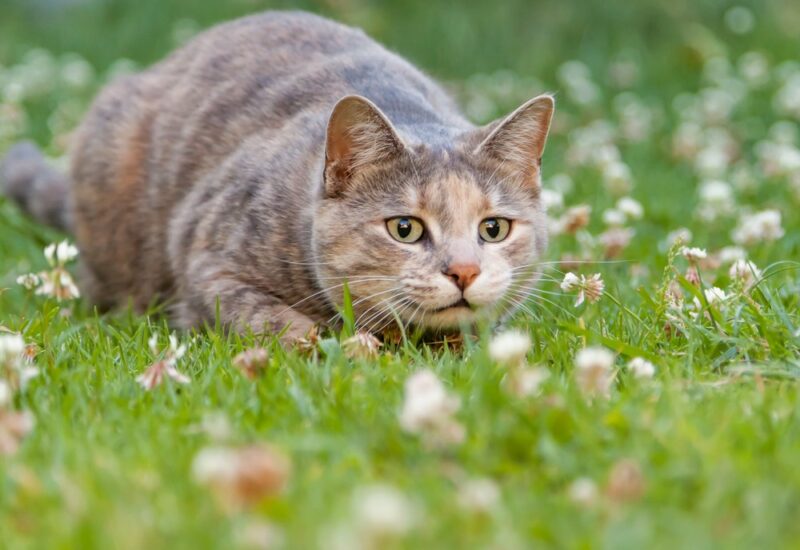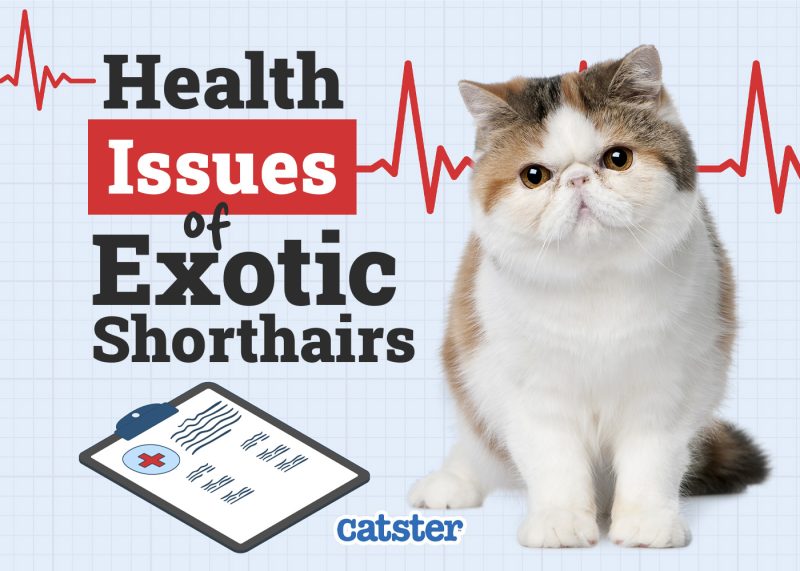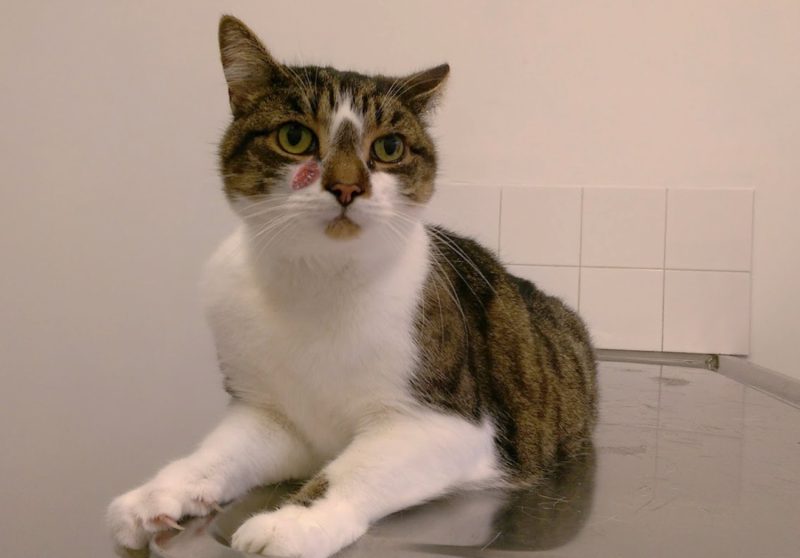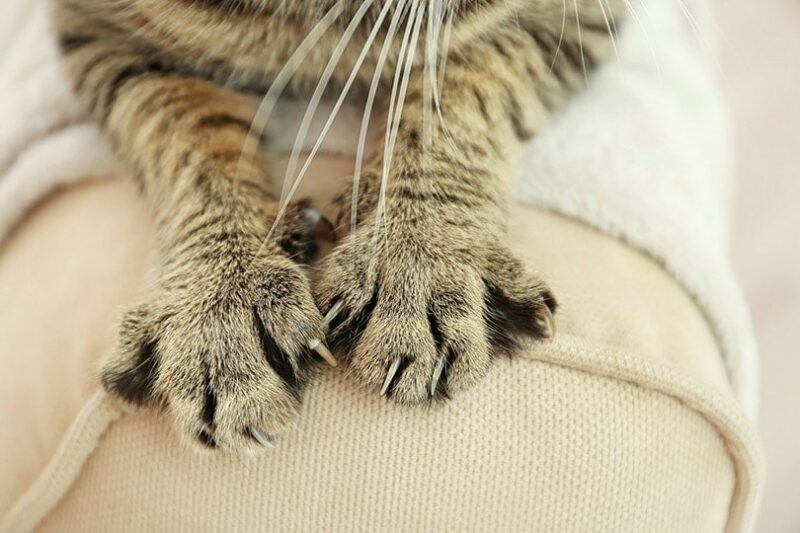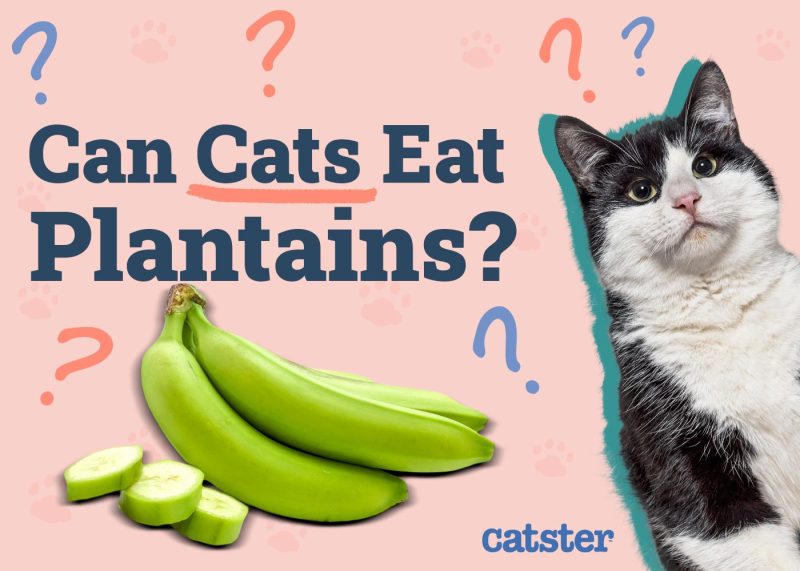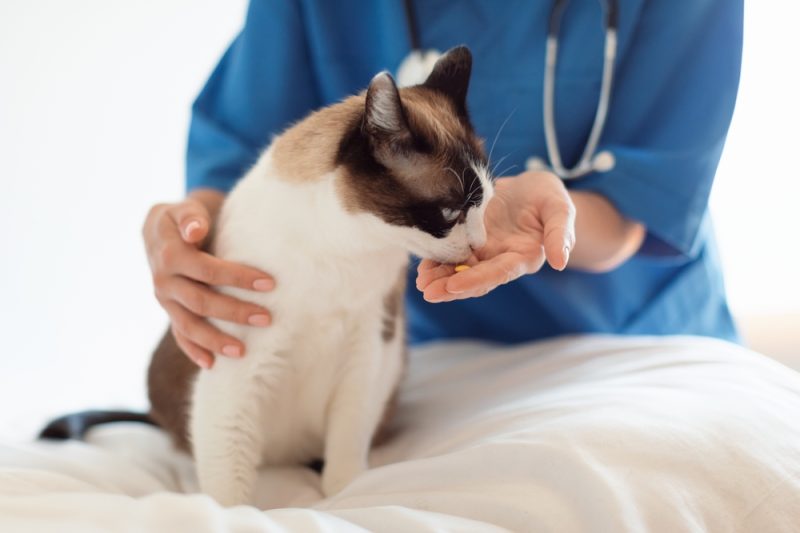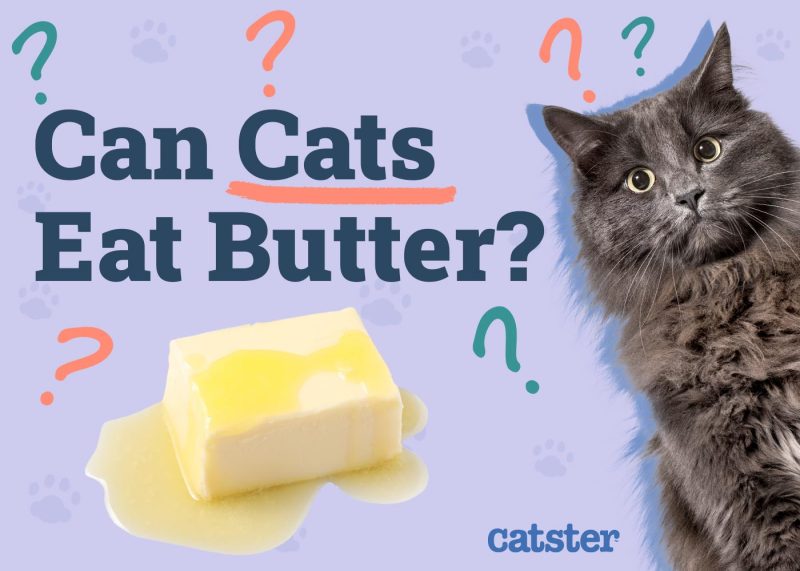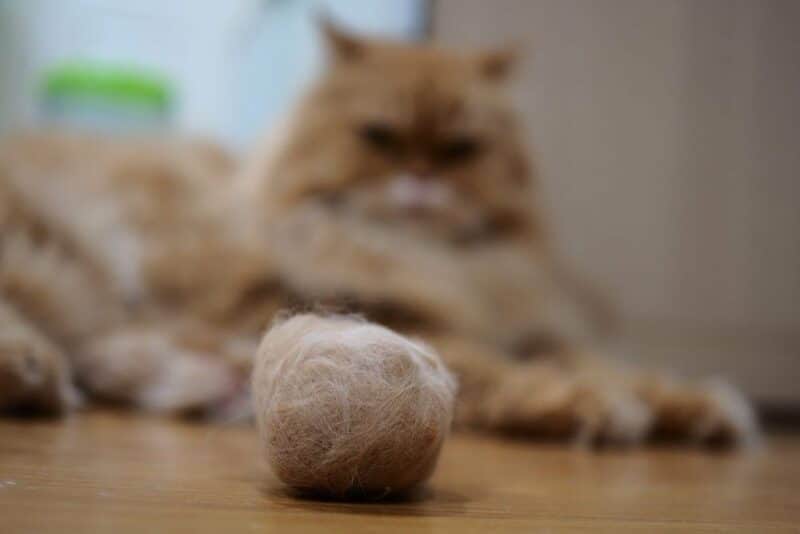As cat owners, we love our little house panthers. But the one thing we aren’t fond of is the claws. Cats show their claws as they play and scratch our furniture when they think we’re not looking. When cats are done using their claws, they retract them. All domestic cats have retractable claws, but they don’t need to use them like in the wild.
Most wild cats have retractable claws, too. The only exception is the cheetah, which we’ll discuss later. Cats use retractable claws for good reasons that stem from instinct. Keep reading if you’re still interested in learning about retractable claws.

How Retractable Claws Work
To understand how retractable claws work, you have to understand the anatomy of a cat’s paw. Like a human, a paw has muscles, ligaments, tendons, and phalanges that work together to make it possible for the paw to retract claws at a moment’s notice.
Each claw sits in a cuticle (its bed) on the very last segment of a cat’s digits (the equivalent of human fingers). Each claw is also attached to a bone, and tendons are found between each claw and the adjacent bones. The superficial and deep digital flexor tendons are especially important.
When cats want to unsheathe their claws, they contract the muscles in their forelegs to flex the digital flexor tendons. When this happens, the tendons pull backward along their attachment to the other bones in your cat’s forelegs, allowing the claw (which only attaches to the last segment of a digit) to extend forward. If the cat relaxes the muscles in their forelegs, the tendons fall forward, sheathing the claws once again. Under normal circumstances, a cat’s claws are retracted because they aren’t flexing their foreleg muscles (cats walk on their tip toes).
Therefore, cats have to flex their foreleg muscles when they wish to unsheathe their claws. You can see this mechanism by gently squeezing the large paw pad on your cat’s foot: their claws should unsheathe when done properly.
The shape of a claw and the toe bones (phalanges) also help make it mechanically possible for a cat to retract the claw into the paw.
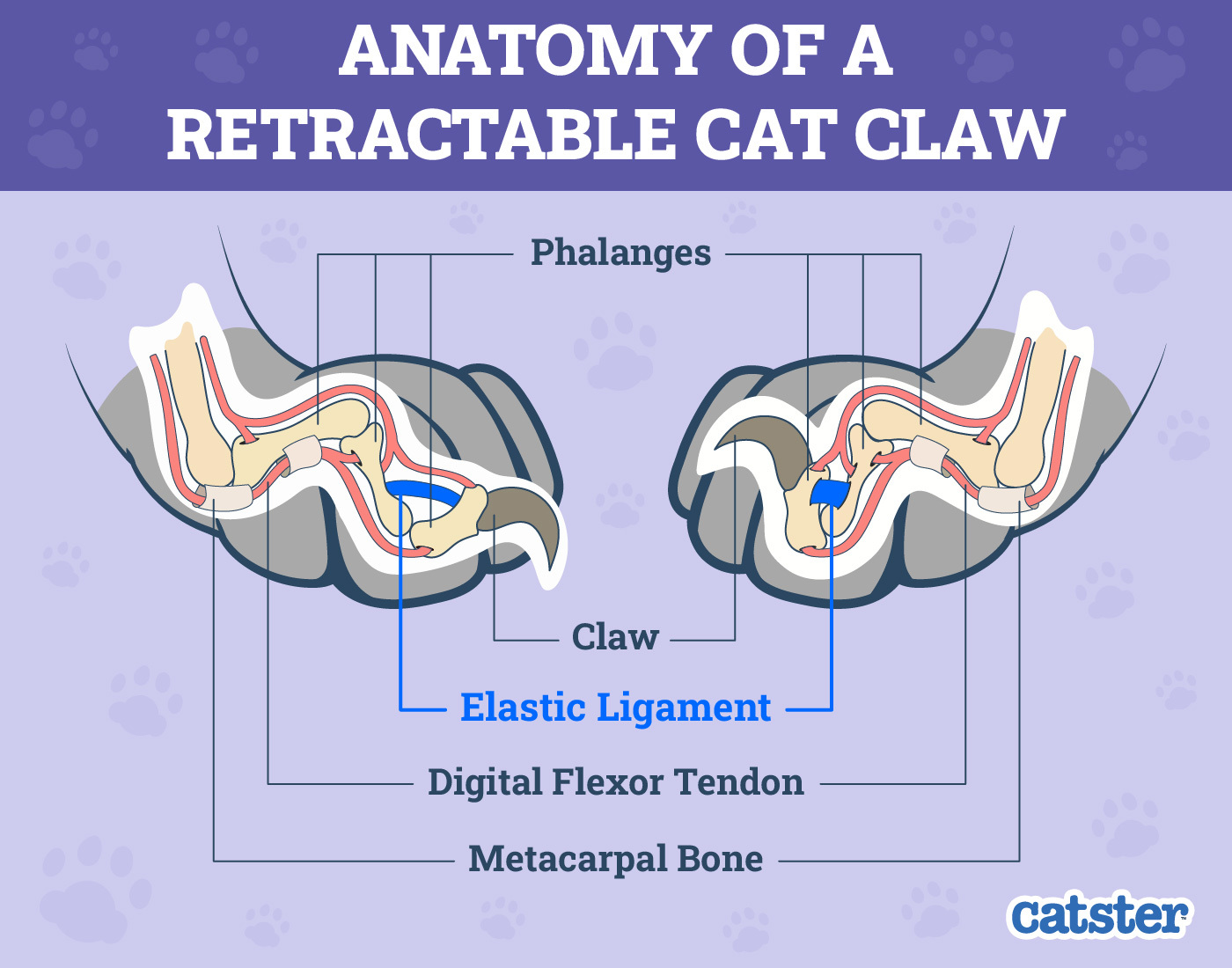

Why Cats Have Retractable Claws
Cats have retractable claws for a few reasons. It might seem like destroying your couch or hurting your hands during a play session is the main reason, but don’t worry. That’s not the case. The purpose of retractable claws is to fulfill a cat’s role as a hunter. Most domestic house cats won’t need to use their claws for these reasons. Still, they’re a part of a cat’s anatomy, and they serve a few crucial roles.
Hunting
Since cats are natural-born hunters, they need claws to capture prey. Cats stalk their prey, and then, when the time is right, they use their sharp claws to grab, hold, and kill their prey. It’s not a fairy tale story, but it’s how cats are hotwired. They need meat to survive, and their claws play a significant role.
Domestic cats may not hunt for food, but they remain true to their instincts. Throw a stuffed mouse their way, or hide a string around a corner, and your kitty pounces with its claws out! Having retractable claws also gives cats stealth, allowing them to stalk their prey silently. When sheathed, the claws are also protected, which is crucial to a cat’s survival in the wild, as they rely on them to find food.
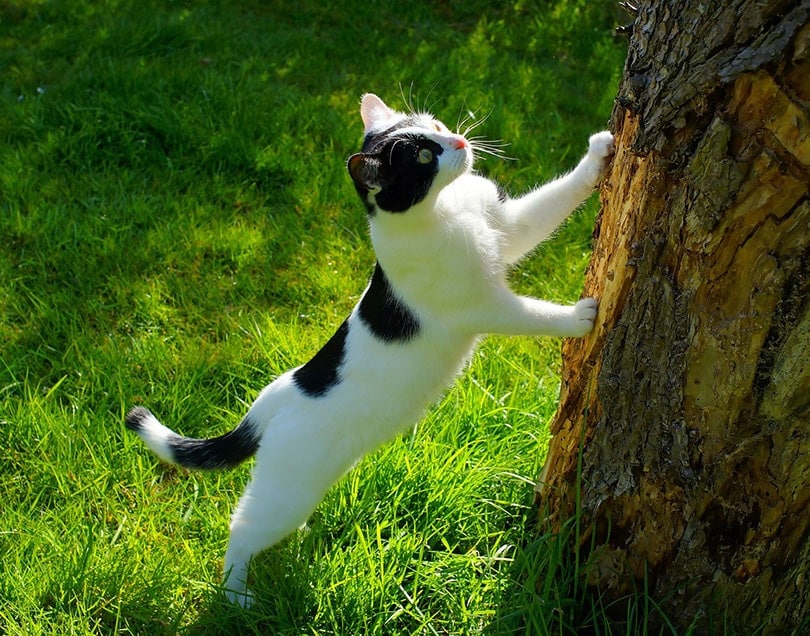
Climbing
Domestic cats are both hunters and prey. In addition to being excellent hunters, cats are top-tier climbers. Climbing is part of their hunting ability. It’s a great way to stalk their prey with a view. But climbing also protects them from predators. They need to protect themselves from larger animals that pose a threat.
Claws grip onto tree bark and other materials very well. Mix this with a cat’s flexibility, and climbing a tree becomes a no-brainer. Cats love a good view at the end of the day. Your house cat still wants to climb on things like kitchen counters and shelves. Providing a cat tree and cat shelves is a great way to fulfill this instinct.
Self-Defense
If a kitty has ever scratched you, you know how much it hurts. Animals like dogs, coyotes, and other cats may attack a cat given a chance. Since cats are also prey, they need to defend themselves, and their claws are perfect.
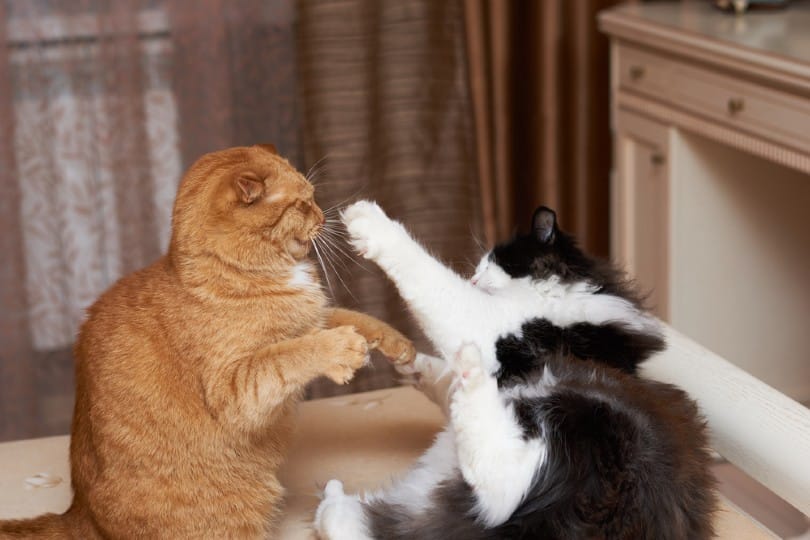
Because functional paws and claws are essential for cats to live a normal life, the practice of permanently removing your cat’s claws, also known as declawing, is strongly discouraged. The procedure is extremely painful, completely unnecessary, and lowers a cat’s quality of life. A cat’s claws can be trimmed, and most cats will readily use a scratch post to keep their claws manageable.

Why Cheetahs Don’t Have Retractable Claws
It may come as a shock that cheetahs are the exception to the rule of all the cat species. However, cheetahs are almost always the exception. These cats have differences that give them their genus, Acinonyx jubatus.
Cheetahs lack the climbing abilities that other domestic and wild cats have. They make up for this with their jaw-dropping running speed of reaching 75 mph. When it’s time to run, Cheetahs can accelerate from 0 to 68 mph in three seconds.
Cheetahs are built differently to accommodate this speed. They have deep chests and enlarged hearts, plus large nostrils so they can breathe well during their sprint.
Because these fantastic creatures have to be ready to sprint at a moment’s notice, their claws don’t fully retract. This allows for better traction when they run and helps them stop should they need to come to a complete stop at high speeds.

Final Thoughts
Cats are amazing creatures, both wild and domestic. Hopefully, this post has given you some insight into the wonderful abilities of a cat and why your cat likes to scratch your sofa. It is not because your cat likes to get a rise out of you. At least, that’s not the only reason.
Featured Image Credit: RJ22, Shutterstock


